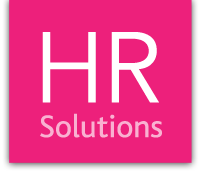
Today, 31 March 2022, marks the day of International Day of Transgender Visibility, and is a day for celebrating the courage and achievements of trans people worldwide. It is also an important occasion for raising awareness of how transgender people can face discrimination, including in the workplace.
It is vital that employers build an inclusive culture supporting all employees, regardless of their gender identity or any other protected characteristic. Everybody has the right to equal access to employment, promotion, equal pay and training and development, no matter how they identify themselves, or regardless of any protected characteristic that they hold.
So how can an employer support inclusion and equality of transgender people and build a culture that is inclusive and free from discrimination?
Transgender equality policy
First, accept individuals in their chosen gender and positively support this community by introducing a Trans Equality Policy. Not only will it help provide support to your transgender employees by reassuring them as to how the company will support them, but it will also assist in the education of the wider workforce on transgender, and act as a practical guide for all line managers on how to manage an employee who is transgender.
Ensure that your application forms (and any other documentation that asks for titles) allow applicants to define how they wish to be addressed. Include options for Mx as well as other.
Inform candidates of any checks that you make for new recruits such as a DBS check as it will require previous names. This needs to be handled sensitively, and ideally, you would want to have a nominated person in the organisation who manages applications of this nature. They can then be aware that the names on the checks may not match and can store the data in a confidential and secure place. For those individuals who do not wish to disclose a previous gender, then there is a confidential service at the DBS for transgender applicants to help protect their identity. They can be contacted via the DBS sensitive applications line on 0151 676 1452 or email the team at [email protected] for further advice about completing the form.
Equal opportunity monitoring – if you intend to monitor gender and gender reassignment, ensure that you give a written assurance that this is for equal opportunity monitoring purposes and remove the data from the application form prior to shortlisting so that the risk of bias is removed. Asking appropriate questions about gender identity and trans status does indicate that you take this seriously – but ensure that any questions about gender identity are asked separately from ones about sexual orientation. When asking for gender, you could include non-binary, prefer not to say, or other.
Ensure that your equal opportunities policy covers gender reassignment, and that employees and managers are all aware that gender reassignment is a protected characteristic. You may wish to also have a diversity policy, or a policy on dignity at work.
Regularly review your policies and procedures and consider whether the proportion of any minority who can comply with any requirement or condition is considerably smaller than the proportions of persons not of that group. Are there any areas where indirect discrimination may occur? If there is a disproportionate impact on one group, consider whether the requirement/condition is justifiable and proportionate.
Encourage a culture of zero tolerance for bullying, harassment or banter which is unacceptable and offensive. Train your staff and managers to uphold this.
Consider introducing a set of core values which set out the importance of treating colleagues with dignity and respect.
Address transsexual employees as they would wish to be addressed – check which they would prefer, discreetly, as soon as possible. Mistakes in gender address can cause offence and distress.
If asked for a reference for someone who has transitioned since leaving your employment, check with the ex-employee whether you should refer to their previous name and gender or not. Ensure the content refers to the correct name and gender.
Further Information
For further guidance on this topic please contact us or get in touch with us on 0844 324, 5840, and if you are a Knowledge Base user, you can log in and read our article ‘Discrimination – gender reassignment’.








